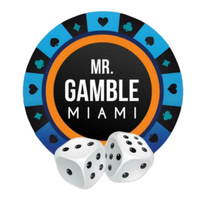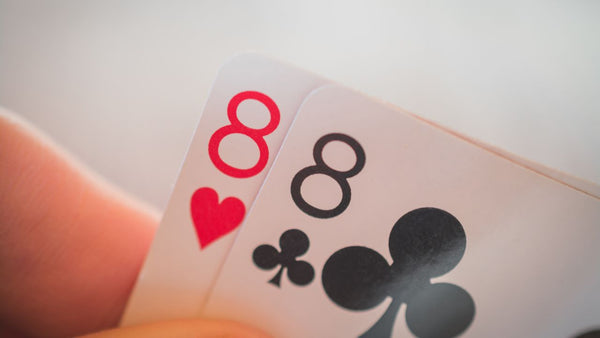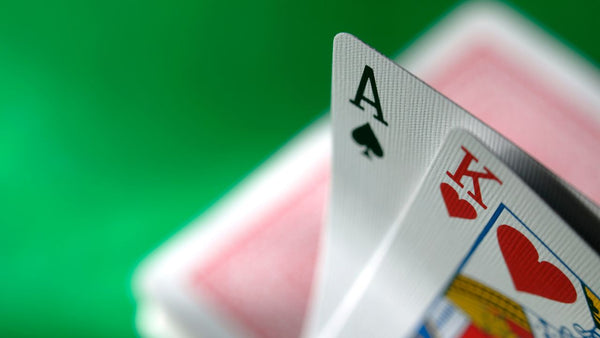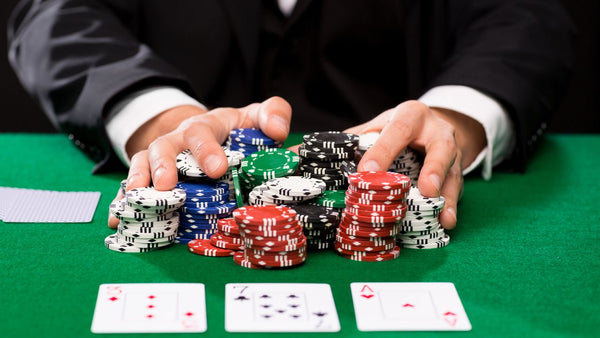Poker Marked Cards
In the clandestine world of poker, marked cards serve as silent accomplices to deception, embodying a rich history of ingenuity and cunning. From the crude card marking practices of yesteryears to the sophisticated invisible ink technologies of today, the evolution of cheating devices has been nothing short of remarkable. Dedicated manufacturers like Modiano, Copag, Bicycle, and Fournier offer an extensive range of marked playing cards, each bearing its unique pattern and values. At the pinnacle stands the legendary Bicycle Ultimate Marked Deck, a symbol of mastery in the art of deception. In this shadowy realm, where fortunes hinge on the turn of a card, the allure of poker cheat cards remains irresistible—a testament to the ceaseless pursuit of victory in the game within the game.
Top Poker Marked Cards
Types of Poker Marked Cards
In the realm of poker, there exists a clandestine world, shrouded in mystery and intrigue. This world revolves around the special craft of marked cards. Imagine a deck of cards, seemingly ordinary to the naked eye, yet harboring secrets visible only to those initiated into its secrets. These cards, marked with invisible ink or encoded with infrared technology, hold the potential to tilt the scales of fortune in the favor of those who wield them.
Infrared Marked Cards
Among the arsenal of marked cards, infrared marked cards stand out as a testament to ingenuity and deception. Utilizing a special blend of chemical liquids and the principles of optical science, these cards bear markings invisible to ordinary sight. Only through the aid of infrared glasses or specialized contact lenses can the hidden marks be unveiled, turning an innocent game of poker into a high-stakes endeavor.
Infrared UV Marked Cards with Invisible Ink Marks on Back
Another iteration of this clandestine artistry comes in the form of infrared UV marked cards. These decks, adorned with invisible ink marks on their backs, are the tools of choice for those seeking to tip the scales in their favor undetected. Whether it's a high-stakes poker tournament or a casual game among friends, the presence of these marked cards introduces an element of uncertainty and suspicion, blurring the lines between skill and subterfuge.
As a seasoned player in the world of poker, I've witnessed firsthand the impact that marked cards can have on the dynamics of the game. From the subtle nuances of a card's design to the intricate methods employed to conceal its true nature, each hand dealt becomes a delicate dance between deception and detection. In this shadowy world where every move is scrutinized and every card held suspect, the allure of marked cards persists, tempting both novices and seasoned veterans alike with the promise of untold riches or the specter of ruin.
Barcode marked cards appear unassuming at first glance, resembling their ordinary counterparts in every aspect. Yet, hidden within the invisible confines of their edges lies a secret that sets them apart. Embedded discreetly within the very fabric of these cards is a barcode, imperceptible to the naked eye but potent in its implications. This barcode serves as a conduit, allowing a poker card scanner to effortlessly scan its surface, extracting vital information that is then relayed to the video poker hand analyzer host.
Delving deeper into the mechanics of barcode marked cards unveils a world of subterfuge and sophistication. Through the seamless integration of modern technology, these seemingly innocuous cards become instruments of strategic advantage. The edge of each card, adorned with its covert barcode, becomes a gateway to unlocking insights invisible to the unaided observer. As the poker card scanner glides over its surface, it deciphers the encoded information, laying bare the secrets concealed within.
As a seasoned player, I've encountered firsthand the subtle influence of barcode marked cards in the realm of poker. Their clandestine nature adds an element of uncertainty to the game, blurring the lines between skill and chance. Yet, it is this very ambiguity that fuels the intrigue, drawing players into a world where every hand dealt holds the potential for revelation or deception. In the ever-evolving landscape of poker, barcode marked cards stand as a testament to the ingenuity of those who seek to gain an edge, however elusive it may be.
How Marked Cards are Used in Poker
Cheating in poker with marked cards is a deceptive practice that has plagued the integrity of the game for decades. The allure of gaining an unfair advantage over opponents entices some to resort to unethical means. As a seasoned player, I've witnessed firsthand the devastating impact cheating can have on the sanctity of the game.
Unveiling the Deception
Marked cards are altered in such a way that cheaters can discern the value of specific cards simply by glancing at the back. The methods of marking vary greatly, ranging from a circular design reminiscent of a clock face to the cunning use of invisible ink that disappears once dried. These broad types of marking serve as the tools of deception in the hands of unscrupulous individuals.
The Game Within the Game
For cheaters, the objective is clear: to cheat their way to victory, undermining the integrity of the game itself. However, for honest players, the stakes are higher. Armed with basic knowledge of cheating techniques, they must remain vigilant to spot any attempts at deception by their fellow players. This constant battle between integrity and deception adds a layer of complexity to the game, transforming it into a psychological battlefield where trust is a rare commodity.
A Call for Vigilance
As someone deeply invested in the world of poker, I implore all players to remain vigilant against the scourge of cheating with marked cards. By educating ourselves on the techniques employed by cheaters and fostering a culture of integrity, we can preserve the purity of the game for generations to come.
Detecting Marked Cards
Detecting marked cards is a skill that requires a keen eye and an understanding of subtle cues. For gamblers, being able to spot these marked cards can mean the difference between winning big and losing everything. One method used to identify these cards is the gamblers' riffle test, also known as "going to the movies."
Understanding the Riffle Test
When cards are riffled, the marks on marked cards exhibit a unique behavior – they seem to dance around the back of the cards. This phenomenon is observable to the viewer who knows what marks to look for. It's a blend of contextual awareness and NLP-related understanding.
Personal Experience
Having spent years in the world of gambling, I've honed my skills in detecting marked cards. The riffle test is not just a technique; it's an art form. Each flick of the cards reveals a story, and as a viewer, I've learned to read between the lines. The marks may dance, but to me, they tell a tale of deceit or opportunity.
Expert Insight
In the realm of gambling, nothing is left to chance. Every mark, every shuffle, tells a story. The riffle test is just one tool in a gambler's arsenal, but it's a crucial one. By understanding the intricacies of detecting marked cards, one can tilt the odds ever so slightly in their favor. It's a game of skill, observation, and a touch of intuition. And in this game, the marked cards may try to deceive, but with the right knowledge, they can be identified with certainty.
When it comes to detecting marked cards, there's a plethora of methods at your disposal. Black lights, specific filters, angled light, and the classic "riffle" test are just a few examples of techniques that can aid in uncovering a marked deck.
Casinos and poker rooms employ various methods to identify marked cards within their establishments. These include sophisticated scanning devices, trained personnel, and meticulous inspection protocols aimed at maintaining fair play.
For players keen on safeguarding the integrity of their games, being vigilant is paramount. Look out for irregularities in card patterns, unusual markings, or discrepancies in card backs. Familiarize yourself with common techniques used by cheaters and be prepared to take action if any suspicions arise.
By staying informed and proactive, both establishments and players can work together to ensure that the playing field remains fair and free from deception. After all, the essence of any game lies in its integrity, and detecting marked cards is a crucial step in upholding that integrity.
FAQS
What are marked cards in poker?
Marked cards in poker are deceptive tools designed to give players an unfair advantage. These cards appear ordinary but hold a secret: their backs are subtly altered to reveal their values without flipping them over. The purpose behind marking cards is clear—to cheat in the game. This covert practice adds an extra layer of uncertainty to the already high-stakes world of poker, where skill and deception intertwine with every hand dealt.
What is the invisible ink on playing cards?
Invisible ink holds a mysterious allure in the world of cheating playing cards, serving as a clandestine tool for those seeking an unfair advantage in card games. Among the arsenal of deceptive tactics, marked cards stand out as a testament to the ingenuity of cheaters. Embedded with UV-responsive invisible ink in a unique pattern along their center and edge, these cards evade detection while providing crucial insights to those in the know.
Delving deeper into the mechanics of invisible ink on playing cards reveals a world of subterfuge and sophistication. This specialized ink, responsive to UV light, remains undetectable to the untrained eye. Its unique pattern, strategically placed on the center and edge of marked cards, serves as a silent communicator between cheaters, allowing them to decipher vital information without arousing suspicion. As a seasoned player, I've witnessed firsthand the impact of invisible ink on the dynamics of card games, where every move is scrutinized for signs of foul play.




